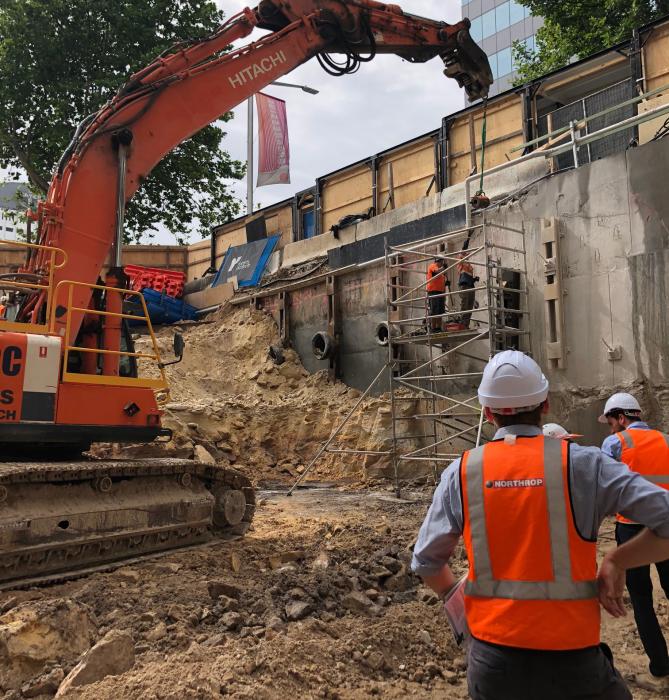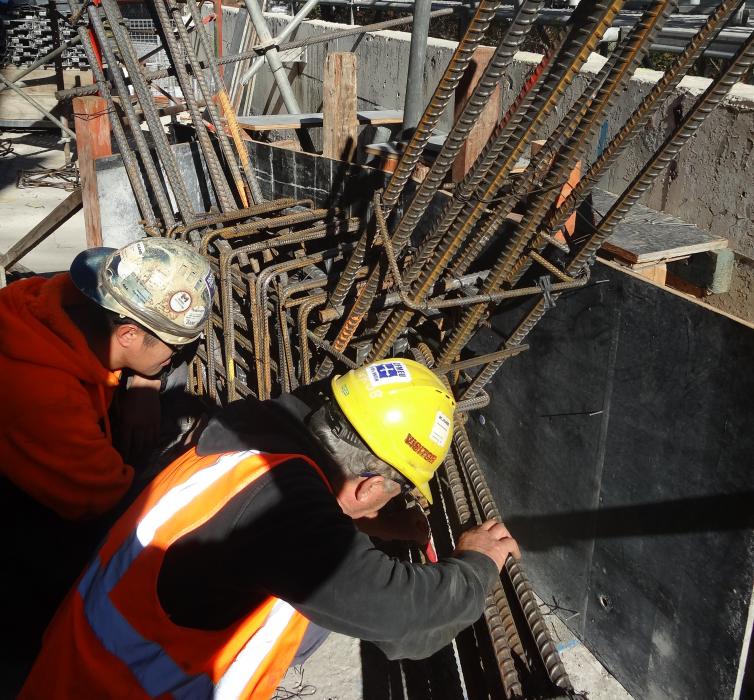Why design engineers must inspect their designs during construction




It makes complete sense. The people who design a building are involved throughout the project to ensure the construction is in line with the plans that were drawn up.
It’s an approach Northrop believes in firmly – not only does it get the best outcome for our clients, but it also helps develop and hone the skills of our engineers, ensuring their practical ability matches their theoretical knowledge.
With cost pressures and skills shortages facing the consulting firms, it is all too easy to reduce inspections or use cheaper non-designers to do the inspection work.
We believe it’s vital that the design engineer sees the project through. Here’s why.
Connecting from the beginning to the end
Northrop’s Principal and Sydney Regional Manager Todd Halliday says, “Every project is fundamentally a prototype. It’s the first time that building has ever been built on that spot.”
The design engineers have a deep knowledge of the building or development because they have been involved from the start.
“The structural engineer will know the columns and beams that are under high stress. The civil engineer will know which pits and pipes are crucial to avoid flooding, and the electrical engineer knows which circuits will be under heavy load.”
“They know exactly what to look for on a site inspection and naturally, there’s a greater sense of ownership, accountability and investment. This knowledge is also able to be communicated and shared with the people that are building it.”
Safeguarding a project’s success
If a design engineer isn’t involved, you may get a process type person doing the inspection, or an engineer who isn’t experienced in that discipline. They can look at the building but may not truly understand what they are looking at.
The designer can quickly resolve on-site complications, changes or errors and rectify them on the spot. This, in turn, makes the building process far more efficient.
Some companies may be tempted to save money and send non-designers out to do the inspections, or even outsource the responsibility, however, Todd believes it’s essential that the team doing the work carries out the inspection.
“The repercussions of not doing so can be minor, or they can be significant. By not getting the right people involved you risk getting a build that’s not built to the design intent.”
It’s all about getting the best possible outcome for the client and ensuring the builder constructs a quality building.
“The designers should effectively help a project get built,” says Todd.
“This approach minimises any margin for error, and it enables us to say with absolute certainty that ‘this building is of a quality standard that we are happy with.’”
Learning comes from the real world
Ultimately, engineers need to experience first-hand the complications and practicalities of getting their design built.
Some of the best teachers are the dedicated, seasoned site foreman who have the arduous task of pulling every component together.
When engineers engage with the foreman, and all the other people involved in getting the project built, they become more knowledgeable, and their ability to design greatly improves project by project.
This approach is a key element of building the engineering capabilities within engineering consultancies.
These firms serve our communities – and our communities deserve well designed and safe schools, hospitals, apartments, houses, offices, factories and train stations.
Want to discuss further the benefits of a design engineer inspecting their own designs during construction? Contact your local Northrop office.

